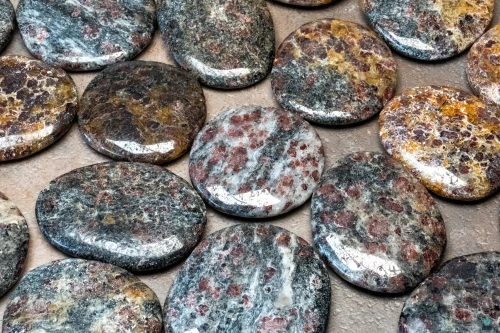
Steatite (Soapstone)

Science & Origin of Steatite (Soapstone)
Steatite, also known as Soapstone, is a metamorphic magnesium-rich rock composed of talc and schist that crystallizes in massive formations. Minor amounts of chlorite, amphiboles, calcium carbonates, aluminum oxides, and micas are usually found within the chemical composition of Steatite, depending on the region and area in which the stones are formed. This mineral has been used since the Stone Age as an application for tools, pottery, weapons, and sacred amulets worldwide. The color can range from different shades of brown, black, grey, and also white. Steatite can be found all over the world with significant industrial mines found in India, Brazil, Finland, Canada, and the USA.
Ancient Civilizations
Some Indigenous groups that have benefited from Steatite include Native Americans, ancient Egyptians, the Intuit people of modern-day Canada and Greenland, multiple Indian civilizations in southern Asia between the 10th and 16th centuries, the people of China during 700-400 B.C., Australian Aboriginal groups in the 19th century, and Ancient Greek people, specifically on the Island of Crete during the Bronze Age.
Meaning & Energy
Steatite is celebrated for its soothing qualities, promoting calmness and a sense of balance. It assists in preparing for change and transitions by fostering flexibility and a clear, pragmatic approach to new challenges. Soapstone’s dense and warm nature also makes it an excellent conductor of energy, aiding in the healing process by stabilizing the ambient temperature around it. This makes it particularly effective in physical and spiritual practices where stability and grounding are required.














